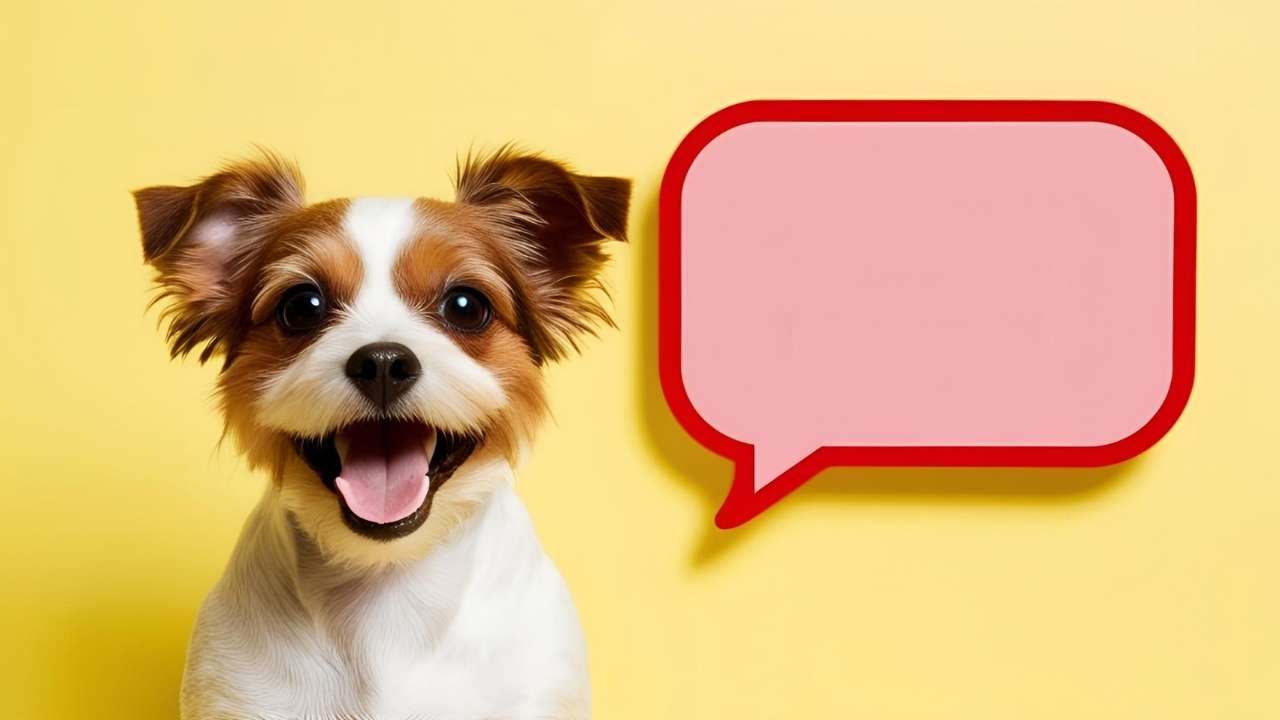Dog talking buttons are special tools that allow your furry friend to “speak” by pressing buttons that play words or phrases. These buttons are preprogrammed or customizable with audio recordings. When your dog presses one, a word like “food,” “outside,” or “play” is spoken out loud.
Many pet parents have discovered these buttons through viral TikTok videos. One popular example is Bunny the talking dog, who uses buttons to share her thoughts, feelings, and needs. Social media has made these tools more popular, showing how smart and expressive dogs can be with the right training.
More people are now exploring button training because they want a better way to communicate with their pets. Using talking buttons makes it easier to understand what your dog wants, whether it’s outdoor time, food, or a potty break. It also strengthens your bond and makes daily life smoother.
In this blog, you’ll learn what dog talking buttons are, how they work, and how to train your dog to use them. We’ll also share helpful tips to make the process fun and rewarding.
What are dog talking buttons?
Dog talking buttons are simple devices designed to help dogs communicate. Each button plays a word or phrase when your dog presses it with their paw or nose. These buttons can be preprogrammed or you can record your own voice to create an audio prompt. This makes the buttons customizable based on your dog’s needs and favorite words.
The main purpose of these talking buttons is to give dogs a way to share their thoughts. They can tell you when they want food, ask for outdoor time, or let you know they need a potty break. Over time, dogs learn to connect certain buttons with specific needs or desires.
The technology is very basic, making it easy for both pet parents and dogs to use. Most buttons are large, have clear sound, and are easy to press. You can place them in important locations around your home, like near the door or food shelf, to help your dog learn faster.
Some common examples of what buttons can say include “treat,” “outside,” “play,” “potty,” and “bed.” These words help your dog express common daily needs and emotions.
Using dog buttons can lead to better communication, fewer misunderstandings, and a stronger bond between you and your pet. It turns regular training into a fun and rewarding experience for both of you.
How to train your dog to use talking buttons
Teaching your furry friend to speak with dog talking buttons takes time and patience. With the right tools and strategy, your dog can learn to press a button to communicate needs like food, potty breaks, or outdoor time. Below are the basic steps that every pet parent can follow to make button training successful.
Repetition, repetition, repetition
Repetition is one of the most important fundamentals of training. Dogs learn best when you repeat the same action many times. To help your dog understand the meaning of each button, press it during your daily routine. For example, press the “food” button before feeding time or the “outside” button before a walk.
Use consistent practice so your dog starts to connect each button with a specific action or desire. Don’t expect your dog to learn instantly. It takes time for them to build strong associations. Stick with it, and you’ll begin to see progress.
Start training your dog with simple words
Begin with simple words that match basic commands your dog already knows. Start with useful and common words like “outside,” “food,” or “play.” These are high-reward terms that your dog hears and responds to often.
Using simple words helps avoid confusion. Don’t introduce too many words at once. If your dog has too many buttons to choose from, it can slow down learning. Pick a few favorite words to begin, and add more once your dog shows confidence with the first ones.
Set your dog talking buttons near the action
Location is important in button training. Place the buttons close to the object or place they are linked to. For example, place the “outside” button next to the door or the “food” button near the food shelf or cabinet. This makes it easier for your dog to connect the button to the correct action.
Having the button in the right spot helps your dog learn faster. It creates a strong association between the button, the word, and what happens next. That’s how your dog starts to communicate using these tools.
Model the desired behavior for your dog
Dogs learn well through modeling and mimicry. To teach a new button, you should model the desired behavior. Before you take your dog outside, press the “outside” button and say the word clearly. Use a strong verbal command and follow it with the action.
Over time, your dog will copy what you do. At first, they might do a nose boop or an accidental sniff of the button. Praise them when they interact with the button. Your furry friend will begin to understand that pressing the button brings a result they enjoy.
Shaping in dog training
Shaping is a helpful training tip used by many pet parents. It means rewarding small steps that lead to the final goal. If the goal is for your dog to press a button to ask for food, start by rewarding smaller actions.
For example:
- Step 1: Dog looks at the button → give praise.
- Step 2: Dog touches the button → give a treat.
- Step 3: Dog presses the button on purpose → give more praise and a reward.
These mini-objectives help your dog understand what you want. Use positive reinforcement, such as treats and praise, for every small success. Shaping turns learning into a fun and rewarding experience, helping your dog build useful communication skills.
Dog talking buttons training tip: Find the fun!
One of the most important dog training tips is to keep things fun. When training with talking buttons, the goal is to help your furry friend communicate—not to create stress. Always remember that learning should be a rewarding experience for both of you.
Keep each session playful and light. If your dog makes even a small step forward, celebrate it. Use positive reinforcement to show them they’re doing a great job. A simple treat or some verbal praise can go a long way. Add in a short game or their favorite tricks to make the moment even more special.
Using treats, games, and affection will help your dog stay motivated. These tools are more than just rewards—they help your dog enjoy the process. Training should feel like bonding time, not a strict lesson.
If your dog gets distracted or loses interest, don’t worry. It’s okay to take a break. Forcing training when your dog is tired or bored can lead to frustration for both of you. Every dog is different, so it’s important to adjust the pace based on your dog’s personality. Some dogs may pick up on commands and audio prompts quickly, while others need more time and repetition.
As a pet parent, your role is to guide your dog with patience, love, and encouragement. Use their favorite words and be consistent. With a little effort and a lot of fun, your dog will soon start using those talking buttons to share their needs and desires.
You may also read: 9 Things You Need If You Travel With Your Dog Over The Holidays
How Daylight Saving Time Affects Dogs and What You Can Do About It
5 Fun Indoor Activities for Dogs to Stay Active During Cold and Snowy Days
How Dog Genes Shape Behavior and Personality: What New Studies Reveal
Fun Dog Activities to Keep Your Pup Happy, Healthy, and Stimulated
Dog Beach Safety: Essential Tips for a Fun and Worry-Free Day at Dog-Friendly Beaches




